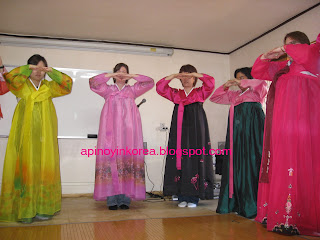Joining a trip with a bus full of foreign tourists down south of Korea, I travelled down south of Seoul to the city of Jeonju in the North Jeolla province
Our stop in Jeonju was the hanok village, where, from a vantage point, we saw that a good portion of this part of Jeonju still boasts itself of well preserved hanoks, or Korean traditional houses, even though the surrounding areas have been transformed by modern culture and industrialization. From there, we strolled down into the village to prepare our lunch. Yes, we ourselves had to cook and prepare our lunch – which is the popular Jeonju bibimbap! (I didn’t even know the types of bibimbap in Korea. But it’s better knowing how to make at least one).
We divided ourselves into groups and were provided with the ingredients to make Jeonju bibimbap – all 25 of them! We were given aprons and a table with a stove, plates and kitchen knives. Since we were preparing real food, we needed a real kitchen!
While most of us may not be into cooking (me included), a real Korean cooking teacher had to lead us step by step into preparing our own Jeonju-style bibimbap. I personally expected that it would all be fun. While we took turns in slicing, frying, and slicing some more, everybody was just giggling, taking photos and excited as to how our bibimbap would look and taste like after. After everybody was done, our Korean cooking teacher inspected each table and chose the best looking bibimbap. Unfortunately, the best looking one was not from our table.
After all the cooking, we even had more fun enjoying our bibimbap, sitting under a tree, on a cool autumn day, exchanging stories and laughing as we recounted our cooking, if you can call it that.
After lunch, came the lessons on the Korean traditional way of bowing.
After everybody changed to wear the hanbok, our Korean teacher lead us into the hanok and taught us two bowing styles – the big bow and half bow – explaining to us in the process where and how the bows should be used. This was also a very interesting part of the Korean culture, as the Korean hierarchy of the past is manifested on the way bows were given. Too bad, though. I can never be able to use my big bows as they are only given to kings.
Learning how to prepare bibimbap (and enjoying it after), learning how to wear hanbok (and bowing to a king) or just enjoying the sights of the North Jeolla Province are a few fine reasons of going down south of Seoul, in case you want to discover more of Korea.








No comments:
Post a Comment